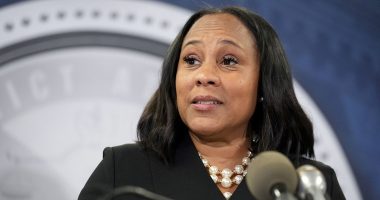
The number of Americans receiving jobless payments fell this month to the lowest level since early in the coronavirus pandemic, but first-time applications rose as supply constraints persist in the auto industry.
In recent weeks about half of states have acted to end enhanced and extended unemployment benefits. The end of pandemic programs in Texas drove the latest decrease.
“The expectation is that this will spur more job-seeking among unemployed Texans as demand for labor improves,” said Gus Faucher, chief economist at PNC Financial Services. “Many employers have said that they would like to hire, but that the supply of workers has not kept up.”
Meanwhile, initial jobless claims, a proxy for new layoffs, rose by 51,000 to a seasonally adjusted 419,000 for the week ended July 17, the Labor Department said Thursday. The increase returned the new claims to near levels recorded in early June. The four-week moving average, which smooths out volatility in the weekly figures, increased by 750 to 385,250.
Economists said the increase could reflect seasonal adjustments in the data, which is typical in July, when the timing of the Independence Day holiday and scheduled factory shutdowns vary year to year.
The largest state-level increase came in Michigan, a state where auto production has been disrupted due to chip shortages. Kentucky, another state with auto plants, also reported a large rise in new jobless claims.
“I do not worry that this reading signals a sudden weakening in labor demand,” said Stephen Stanley, chief economist at Amherst Pierpont. “In fact, I am quite confident that it does not.”
Despite last week’s increase, initial jobless claims and continuing payments have both trended down this year, largely reflecting an improving economy and steady hiring.
U.S. employers added 850,000 jobs in June, the largest gain in 10 months, and workers’ wages rose briskly, signs of a strengthening labor market.
Overall benefit payments had surged in the spring of 2020, as millions of laid off workers sought aid through state programs and others tapped programs established in response to the rise in unemployment during the pandemic. One new program made benefits available to self-employed and gig workers, who aren’t typically eligible, and another allowed unemployed workers to remain on benefits beyond the six months or less most states allow. Washington lawmakers also made benefits more generous, adding $300 a week on top of state payments since late December.
Since rising above 33 million in June 2020, the number paid unemployment benefits has slowly fallen, though the pace of decline increased in recent weeks as many states moved to end pandemic programs. Pandemic program data isn’t seasonally adjusted.
Continuing unemployment payments through regular state programs decreased by 29,000 to a seasonally adjusted 3,236,000 for the week ended July 10, also the lowest level since March 2020. Most people on those programs could remain on benefits if they haven’t found employment, though many states have removed the $300 enhancement.
Many Republicans and some economists say the benefits provide a disincentive to taking lower-wage jobs. Many Democrats and other economists say the payments were a lifeline for workers laid off during the pandemic and helped stabilize the economy.
Colorado is among the states retaining enhanced benefits until September, when they are due to expire nationwide.
Guard and Grace, a steakhouse in downtown Denver, is experiencing a resurgence in business as diners venture out and tourism picks up, said General Manager Jeff Stoltman. But the restaurant is struggling to find workers to meet that demand, which he attributes in part to enhanced benefits, and as a result is keeping its dining room closed for lunch service.
“It’s a slower process than it ever has been to find workers,” said Mr. Stoltman. “People apply but don’t show up for interviews. Maybe they’re finding employment elsewhere, but it could also be they’re meeting job-search requirements but don’t really want a job.”
Most states require unemployment recipients to demonstrate that they are actively searching for a job.
In the near future, the pace of the economy’s recovery could hinge on the Delta variant of the coronavirus, and how the pandemic evolves. Many economists view the variant as a risk, but not a large enough one to change forecasts for robust growth in the second half of the year.
Others see a greater threat that could keep Americans on the sidelines of the labor force.
“Some people might just decide to stay home with their kids because what happens is that if schools close again, mandates become more severe, or if businesses don’t reopen, people start to plan ahead,” said Belinda Román, assistant professor of economics at St. Mary’s University in San Antonio.
Write to Bryan Mena at [email protected]
Copyright ©2021 Dow Jones & Company, Inc. All Rights Reserved. 87990cbe856818d5eddac44c7b1cdeb8









